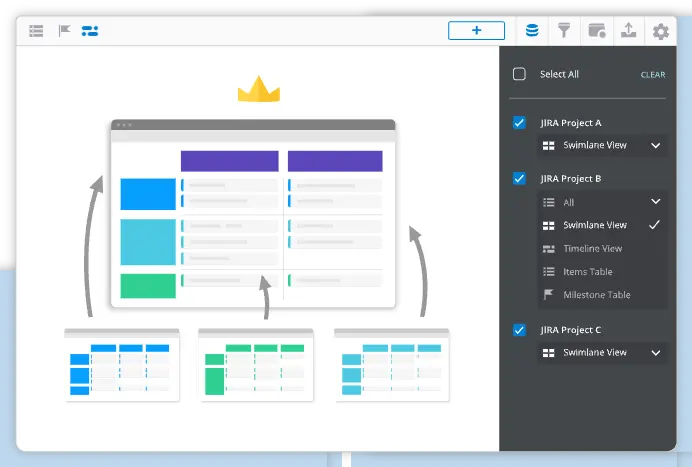Project cost forecasting is the process of estimating future project costs – including labor, expenses, materials and scope-related work – based on current data, planned time allocations, historical trends and budget targets. It helps teams anticipate budget overruns, set accurate financial projections and make strategic decisions well before project completion.
The value of cost forecasting
A robust cost forecast enables organizations to prevent budget overruns, improve resource allocation, drive financial transparency, support strategic decision-making, and strengthen planning accuracy.
Prevent budget overruns
By projecting costs early and revisiting them regularly, you gain visibility on where spend is heading and can act before it spirals.
Improve resource allocation
Knowing how much cost remains allows you to align team capacity, budget and staffing to project needs.
Drive financial transparency
Stakeholders gain a clear view of future financial exposure and projected return on investment (ROI).
Support strategic decision-making
Cost forecasts give leadership insight into which projects deliver value and where to pivot or reallocate resources.
Strengthen planning accuracy
Historical forecast vs actual analysis refines future cost estimations and boosts confidence in budgeting.
How forecasting works with Tempo Financial Manager
Tempo Financial Manager embeds cost forecasting into your Jira ecosystem by using real-time and planned data. It pulls actual time logs from Tempo Timesheets and planned time from Tempo Capacity Planner to compute current and future labor cost projections.
Forecasting metrics such as Planned Cost and Planned Revenue are supported when integrated with Capacity Planner. The tool uses project scope defined via Jira filters, structures or epics, enabling multi-project and portfolio-level forecasting.
With Financial Manager you can view forecasted labor cost for upcoming periods, projection of total project cost based on current burn rate and planned future time, and budget vs forecast vs actual cost comparisons for more informed decisions.
What makes Tempo's forecasting approach stand out
Jira-native and integrated
Because it lives inside the Jira/Tempo ecosystem, you don't have to export data to external tools. Forecasting happens where your teams already log effort and plan capacity.
Time and planning data
Unlike tools that look only at past spend, Tempo uses both actual logged hours and planned hours to forecast future cost exposure.
Flexible scope definitions
Use simple Jira filters or more complex structures to define project or portfolio scope. This makes it adaptable from single-team to enterprise programs.
Cost vs revenue view
Financial Manager doesn't just forecast cost. You can also forecast revenue when billing rates are set, enabling profit and margin visibility.
Smart reporting and export
Generate reports for actual cost, planned cost, actual revenue and planned revenue, enabling finance teams to act on insights.
Forecast a project with Tempo in six steps
Define a project in Financial Manager by selecting the Jira filter or epic scope. Configure cost rates, set up budget milestones and enable revenue tracking if applicable.
Teams log time via Timesheets, and planners assign future planned hours via Capacity Planner. Financial Manager combines actuals and planned hours to project total cost and compare against your budget.
Mid-project you review the forecast. If the projected cost exceeds budget or margin drops, you reassign resources or adjust scope. At project completion you compare forecast vs actual to refine future estimations and build a better cost-forecasting baseline.
Best practices for forecasting project cost
Ensure all team members consistently log time through Timesheets. Forecast accuracy depends on timely data. Keep your planned hours up to date – any changes in scope or effort should reflect in Capacity Planner to keep projections valid.
Regularly review forecast vs actual cost and perform retrospectives to understand variances. Segment forecasts by project, phase, role or cost center to get deeper insight into where costs are accumulating. Align your forecasting cadence with key decision points – monthly reviews, milestone gates or portfolio reviews are ideal.
Take control of project costs
Project cost forecasting is central to managing budgets, aligning resources and delivering value. With Tempo Financial Manager you get a forecasting engine embedded in Jira that combines actual spend, planned work and budget data into actionable insights. It empowers teams to spot cost risk, intervene early and drive predictable financial outcomes across projects and portfolios.
Ready to turn your cost data into accurate forecasts and better financial control?








